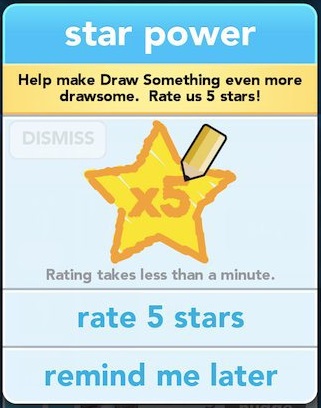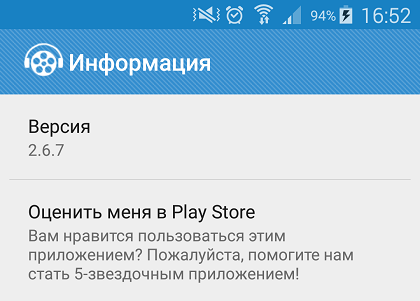How to ask users to rate the application?

To ensure the growth of application downloads, it is not enough just to publish a software product and write an attractive description for it. Owners of smartphones, before choosing a particular solution, among other things, are guided by the ratings and reviews of other users. Of several similar applications, the one that has more high ratings and positive comments will look more attractive. In addition, the application store takes into account user feedback when ranking, which means that an application with a large number of good reviews has a better chance of competing for customers.
Reviews, of course, will appear over time, but what if the application is published recently and you want to quickly receive feedback in the form of ratings and comments?
According to statistics, no more than 5% of users leave reviews and ratings. This is very small. But, fortunately, there are ways to increase this number:
Blackmail: block the application until the five is delivered- Purchase ratings and reviews
- Engaging feedback exchanges
- Ask existing users
Buying reviews is a dubious way, because it does not allow you to get quality comments on your product. In addition, there is a danger that the application store will apply sanctions for cheating ratings.
Using review exchanges (for example, Exchange App Reviews, AppReviewMe) seems like a more honest option, but there are some disadvantages as well: reviewers delete applications after writing a comment, which reduces its weight in the application store.
Why not ask people who constantly use your product to rate it directly or leave a comment right from the application? Let's consider this approach in more detail.
What to consider?
The request to evaluate your project should not prevent the user from interacting with the application, otherwise there is a risk of receiving an angry tirade instead of eulogy as a comment. Do not interrupt the user’s work and annoy you with excessive importunity.
It should be possible to completely disable these requests. And, of course, you need to stop showing requests after the user agrees to give an assessment.
When to offer?
Common sense dictates that the user should not be asked to leave feedback about the application immediately after its installation at the first start: the application should be used at least for some time. There are several approaches: tracking the number of application launches, tracking the elapsed time since installation, or combining these methods. For example, you can ask for an assessment of your project after ten launches of the application, if at least a day has passed after the application was installed.
It seems reasonable to ask for an assessment at a time when the user has gained some positive experience when working with the application, and he solved a problem with his help. In this case, the probability of receiving a positive comment will be higher, therefore, it is necessary to highlight just such events for showing requests.
How to offer?
As the most common methods, I would single out the following:
- Dialog or splash screen on top of the interface
- Banner or link in the interface
- Message in the notification bar
- Offer to rate the application in the settings
Dialog or splash screen on top of the interface

This method is the most common today. Its essence is to display a dialog that prompts the user to go to the application page in the store and give a rating.
Text options: “Would you like to rate the application?”, “Could you leave a review?”. Among the answers are offered: "Yes", "Later", "Do not offer again."

Such a dialogue cannot be overlooked and the user is forced to somehow respond to the request before continuing with the application. But this property also has a negative side: the user may be angry with the unexpected interruption of his work and therefore give a low rating. In this regard, this method should be very thoughtfully applied.

The standard dialog can be replaced with a more attractive splash screen.
Banner or link in the interface
In this case, a request to evaluate the application is placed among the interface elements.

One option is to place a dialog inside an ad container.
In this case, the user’s interaction with the application is not interrupted, but there is a possibility that the user will ignore your call to leave feedback.
Message in the notification bar

This option also does not prevent the user from working in the application. In addition, it can work even if the application is inactive.
Offer to rate the application in the settings

This method assumes that there is a special item in the application settings containing a request to make an assessment. The disadvantage of this method is that the message is not visible and users rarely respond to this call.
Conclusion
Asking users to leave a comment is certainly possible and necessary. But you need to do this so as not to interrupt the normal operation of the application and not to bother with frequent reminders. Among the described methods, choose the one that suits your product, do not forget to use analytics tools to evaluate the effectiveness of these requests.
Good reviews to you!
Only registered users can participate in the survey. Please come in.
How do you ask users to rate the app?
- 49.4% Dialog or splash screen on top of the interface 47
- 10.5% Banner or link in interface 10
- 9.4% Message in the notification panel 9
- 11.5% Offer to rate the application in the settings 11
- 2.1% Other 2
- 16.8% Abstain from voting 16
